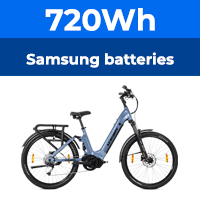Hi.
Slight tearing out of hair moment trying to find fuse holders rated for 36V supplies (pref waterproof).
I have some like this for use with lights which I intend to install after DC-DC converters in feeds to charger outlet sockets / lighting supply wires, which I hope are OK ? :
5 amp mini Blade In-Line Fuse Holder / Fuseholder 5AMP Car van boat waterproof | eBay
... however if you look at the specs these state they are only rated for 32V DC and therefore I don't know if they are OK to use as inline fuse holders on supplies to a 36V light where the internal buck converter must be after the fuse as that's how the light is designed.
Can anyone please help ? Obviously in supplying a light, current would never be anything like 30A - much more likely 1-2A max. But the supply voltage of that particular light is from 36V battery so guessing input voltage to light 36V.
I have also got one of these to use as inline fuse and holder for the main battery to controller power supply line (36V battery / 30-32A controller). It's rated to 150A and I got a couple of 40A fuses for it, so hope it is OK. Is this the sort of thing other people have been fitting ?
MIDI fuse holder MAX- 150 Amp rating ALT FH560
Finding anything rated over 30A / 32V in a regular style inline fuse holder like the one first linked above isn't easy
Slight tearing out of hair moment trying to find fuse holders rated for 36V supplies (pref waterproof).
I have some like this for use with lights which I intend to install after DC-DC converters in feeds to charger outlet sockets / lighting supply wires, which I hope are OK ? :
5 amp mini Blade In-Line Fuse Holder / Fuseholder 5AMP Car van boat waterproof | eBay
... however if you look at the specs these state they are only rated for 32V DC and therefore I don't know if they are OK to use as inline fuse holders on supplies to a 36V light where the internal buck converter must be after the fuse as that's how the light is designed.
Can anyone please help ? Obviously in supplying a light, current would never be anything like 30A - much more likely 1-2A max. But the supply voltage of that particular light is from 36V battery so guessing input voltage to light 36V.
I have also got one of these to use as inline fuse and holder for the main battery to controller power supply line (36V battery / 30-32A controller). It's rated to 150A and I got a couple of 40A fuses for it, so hope it is OK. Is this the sort of thing other people have been fitting ?
MIDI fuse holder MAX- 150 Amp rating ALT FH560
Finding anything rated over 30A / 32V in a regular style inline fuse holder like the one first linked above isn't easy







